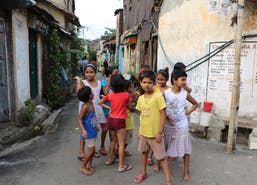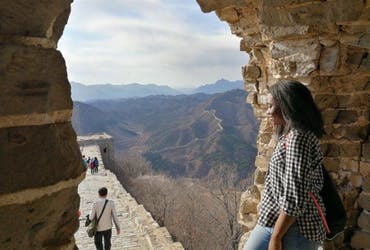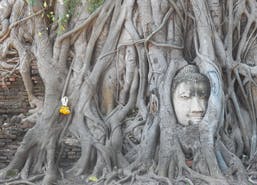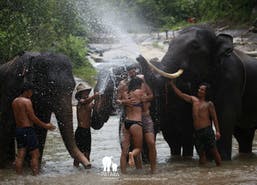The Floating Village of the Tonle Sap
The challenge of visiting Cambodia is the way in which every single aspect of Cambodian history and culture is exploited for tourism. Everywhere you go – be it temples, markets or villages – the hustler’s mentality is on show.
Entrance fee please.
It’s hot; you better buy this bottle of water.
What about this snakeskin drum?

Cambodia’s tourism industry has oversaturated the market, squeezing every single pore for what it is worth. However, if you’re able to look past the gimmicks and stratagems, you’ll discover a country laden with a plethora of culture and life. One area that impacted me in this way was the floating village of the Tonle Sap.
My friends and I were torn when deciding whether or not to visit the floating village. The cost of entry was incredibly overpriced (for example, most tourist attractions in Japan have no cost of entry) and everyone we had met said that it was not worth the time. But we’d been volunteering for a number of days at this point, and decided a break was well deserved.
And for me, there were no regrets at all.


The only way to see past the touristy nature of the Tonle Sap was to engage with the people. Once that shift occurred in my mind, the beauty of the floating village became apparent.
We were floating past schools, community centres and police stations – buildings that were sat on giant stilts. Locals expertly navigated their ways through the thick mangroves that surrounded the freshwater lake. Kids hopped from boat to boat, laughing and smiling in the warm, temperate sun.


The produce of the local area sustained life. Fishermen were wading through the murky waters of the Tonle Sap – diving down with empty nets – and emerging with tiny fish here and there. Within the lake, cages were submerged holding crocodiles that were used to feed the locals and create local craft to be sold to any visitors. The leaves and trunks of the local frondescence were harvested to form the foundations of homes, stilts and bridges that connected the sprawling community.
It was not until this visit where I finally realised that Cambodia had a dualistic, sovereign nature. As a nation attempting to join the growing wealth of South East Asia, promoting thriving industries especially in tourism, makes complete sense. Progress requires money, there’s no denying that.

But looking at the people, there’s a nostalgia that still lingers in the air. A population that had their innocence ripped away from them during the reign of the Khmer Rouge, holding on to the rich culture of the past has been a survival mechanism – a way to connect with those that are no longer with them.
As a visitor to such a complex culture and society, it is important to be open to learning and embracing the complicated past that has come to define its people. Otherwise, travelers may just go to Cambodia, bask in the fruit of the people’s labour without establishing the human connection that progress truly requires.




